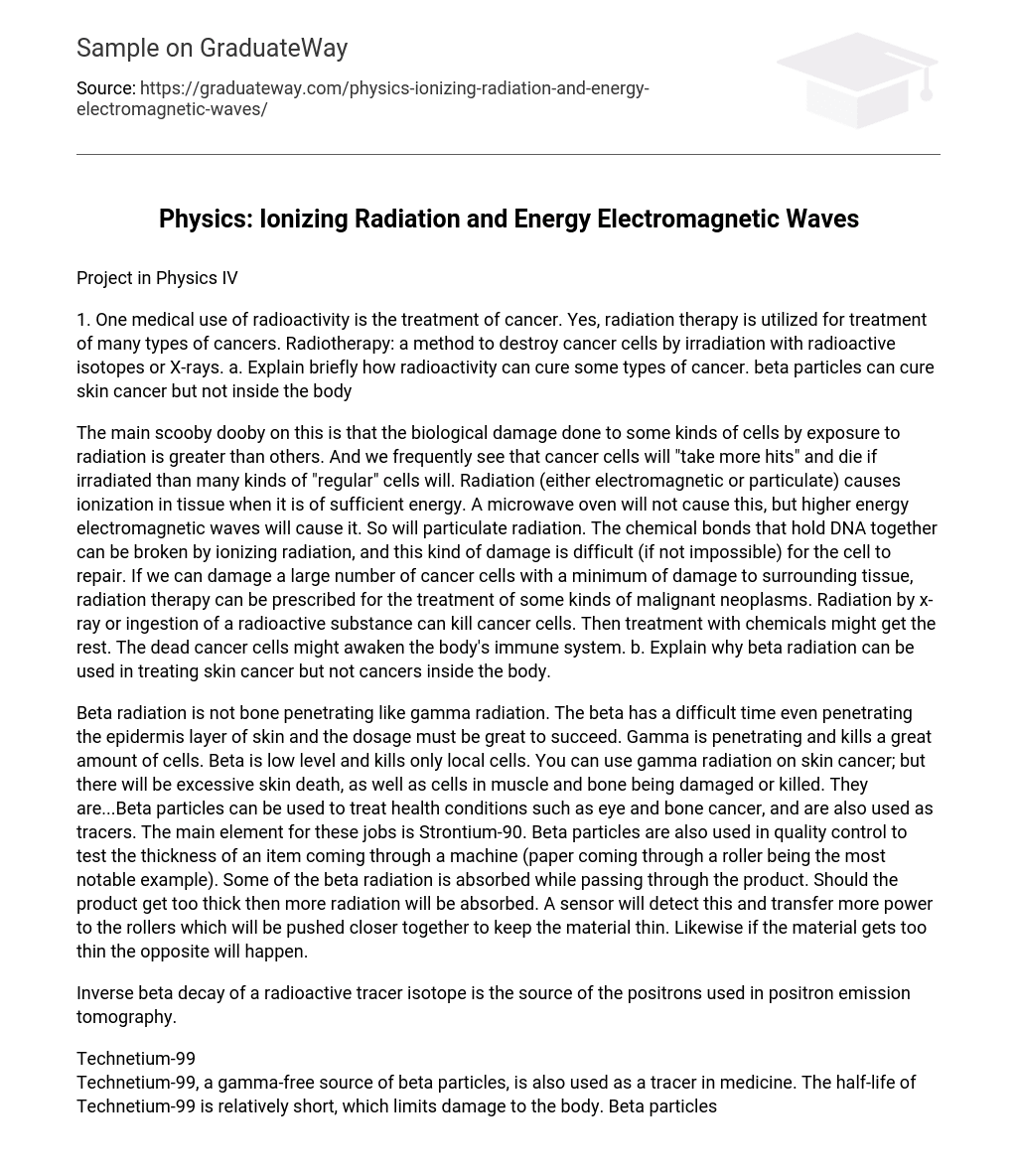Project in Physics IV
1. One medical use of radioactivity is the treatment of cancer. Yes, radiation therapy is utilized for treatment of many types of cancers. Radiotherapy: a method to destroy cancer cells by irradiation with radioactive isotopes or X-rays. a. Explain briefly how radioactivity can cure some types of cancer. beta particles can cure skin cancer but not inside the body
The main scooby dooby on this is that the biological damage done to some kinds of cells by exposure to radiation is greater than others. And we frequently see that cancer cells will “take more hits” and die if irradiated than many kinds of “regular” cells will. Radiation (either electromagnetic or particulate) causes ionization in tissue when it is of sufficient energy. A microwave oven will not cause this, but higher energy electromagnetic waves will cause it. So will particulate radiation. The chemical bonds that hold DNA together can be broken by ionizing radiation, and this kind of damage is difficult (if not impossible) for the cell to repair. If we can damage a large number of cancer cells with a minimum of damage to surrounding tissue, radiation therapy can be prescribed for the treatment of some kinds of malignant neoplasms. Radiation by x-ray or ingestion of a radioactive substance can kill cancer cells. Then treatment with chemicals might get the rest. The dead cancer cells might awaken the body’s immune system. b. Explain why beta radiation can be used in treating skin cancer but not cancers inside the body.
Beta radiation is not bone penetrating like gamma radiation. The beta has a difficult time even penetrating the epidermis layer of skin and the dosage must be great to succeed. Gamma is penetrating and kills a great amount of cells. Beta is low level and kills only local cells. You can use gamma radiation on skin cancer; but there will be excessive skin death, as well as cells in muscle and bone being damaged or killed. They are…Beta particles can be used to treat health conditions such as eye and bone cancer, and are also used as tracers. The main element for these jobs is Strontium-90. Beta particles are also used in quality control to test the thickness of an item coming through a machine (paper coming through a roller being the most notable example). Some of the beta radiation is absorbed while passing through the product. Should the product get too thick then more radiation will be absorbed. A sensor will detect this and transfer more power to the rollers which will be pushed closer together to keep the material thin. Likewise if the material gets too thin the opposite will happen.
Inverse beta decay of a radioactive tracer isotope is the source of the positrons used in positron emission tomography.
Technetium-99
Technetium-99, a gamma-free source of beta particles, is also used as a tracer in medicine. The half-life of Technetium-99 is relatively short, which limits damage to the body. Beta particles are not as penetrative as gamma rays and can be stopped by the skin. Another reason is because of the high risk and danger involve if one is to expose the internal body to the beta radiation. This is due to the high ionizing effect of beta radiation that can easily mutate a DNA strand making it difficult to control it for uses in the body.





